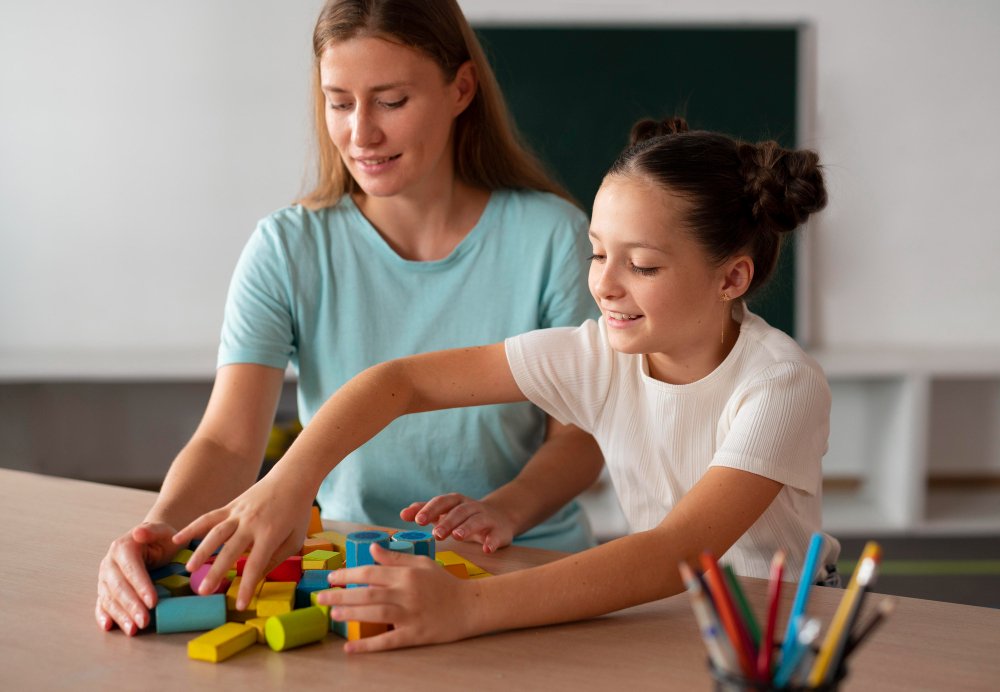Sensory Integration Therapy for Autism at Jewel Autism Center, Kerala

Sensory Integration refers to the way the brain processes sensory information, like sound, touch, and movement. Children with autism or sensory integration disorder often struggle with processing this input, making it difficult for them to react appropriately to their surroundings. For example, certain sounds may seem overwhelming, or textures might feel unbearable, leading to anxiety or behavioral challenges.
- Sensory integration is the process of organizing analyzing, and integrating sensory information from the body and environment.
In short, this is about how our senses interpret, analyze, and react to information that enters our ears, or not. Sensory integration is necessary for every daily job we have to perform, including eating, moving around, learning, working, and getting dressed.
- better motor planning skills, self-regulation, improved function in the home, community, and classroom; increased independence with ADLs; optimal functional ability to carry out everyday and recreational activities; and modulation of sensory systems.
- Creating customized home programs that are realistic, well-planned, and predicated on the idea that regulated sensory input can impact functional capacities is known as a sensory diet.
Sensory integration therapy involves exposing the child to various sensory stimuli in a controlled environment. During the therapy, children engage in activities that help retrain their brain to handle sensory information more effectively. Examples include:
- Swinging on a swing to improve balance and spatial awareness.
- Playing with different textures to help children adjust to various tactile sensations.
- Jumping on a trampoline or engaging in other movement-based activities to improve coordination.
This treatment not only helps autistic children with their sensory challenges but also improves their sensory integration skills, making it easier for them to engage in daily tasks and social interactions.
Sensory integration disorder, also known as sensory processing disorder (SPD), occurs when the brain has trouble organizing and responding to sensory input. Children with this disorder often experience hypersensitivity (overreaction) or hyposensitivity (underreaction) to stimuli, making daily activities like dressing, eating, or playing extremely difficult.
Sensory integration therapy is one of the most effective ways to help children with this condition, particularly those on the autism spectrum. It helps retrain the brain to respond more appropriately to sensory information, greatly improving their quality of life.
As the best autism treatment center in Kerala, we offer expert sensory integration therapy tailored to the individual needs of each child. Our skilled therapists are experienced in working with children who have autism and sensory integration disorder, ensuring the most effective treatment plans are created for each child.
At Jewel Autism Center, our goal is to provide comprehensive support through our sensory integration therapy program. We work closely with parents to ensure their children thrive, both in therapy and at home.
What is sensory integration?
Sensory integration refers to the process by which the brain organizes and interprets sensory information from the environment, such as touch, sound, and movement.
How does sensory integration therapy help children with autism?
Sensory integration therapy helps children with autism manage their responses to sensory stimuli, improving their ability to function in daily activities, social interactions, and learning environments.
What is sensory integration disorder?
Sensory integration disorder (also known as sensory processing disorder) is when the brain has difficulty processing sensory input. It is common in children with autism and can lead to sensory overload or under-responsiveness.
Is sensory integration therapy effective for autism?
Yes, sensory integration therapy is a proven treatment that helps children with autism overcome sensory challenges, leading to improvements in motor skills, emotional regulation, and overall behavior.
